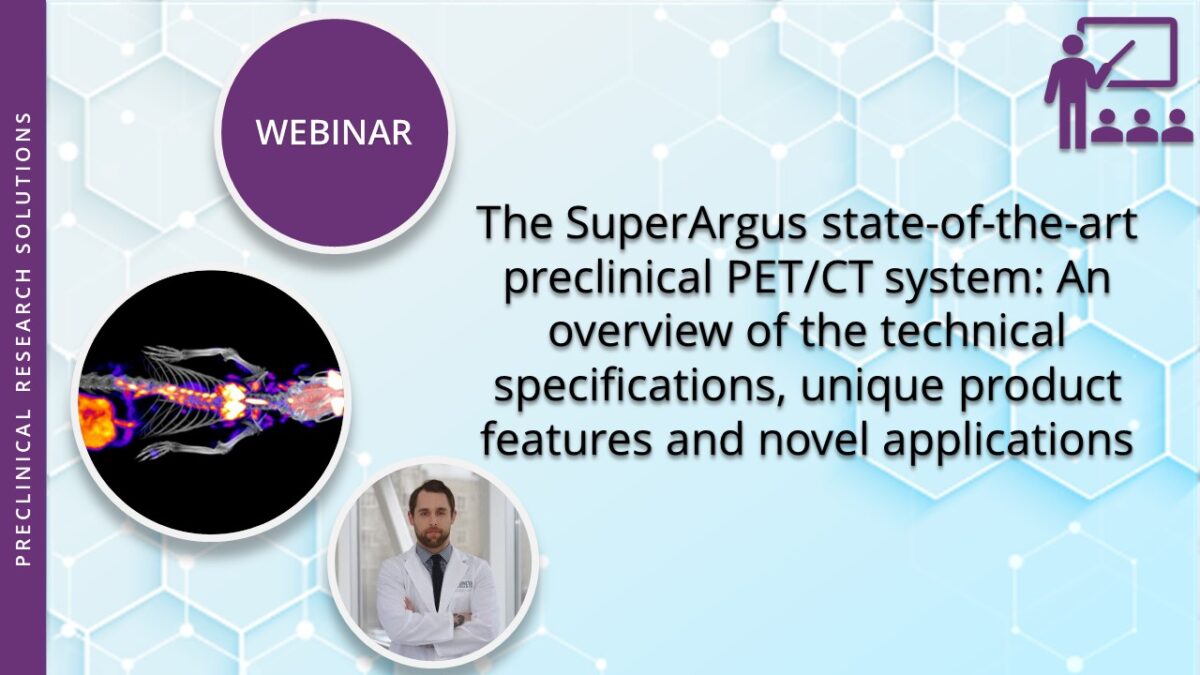(March 3, 2021) WEBINAR: The SuperArgus state-of-the-art preclinical PET/CT system: An overview of the technical specifications, unique product features and novel applications
Overview:
Learning Objectives:
- Introduction to preclinical positron emission tomography
- Introduction to Sedecal
- The SuperArgus: product overview
- What makes the Sedecal systems unique
- Applications and current research
These systems are ideally suited for pre-clinical imaging of small animals such as mice and rats, all the way up to medium sized animals such as rabbits, non-human primates and other similarly sized animals. Some of the unique imaging capabilities include real-time imaging of awake animals, as well as multiplexed PET imaging of standard and non-standard isotopes. Key research applications and example images were reviewed.
Positron Emission Tomography (PET) is the gold standard in metabolic imaging, providing high sensitivity to specific radiotracer used to detect specific metabolic activity or biomarkers in vivo. The most common uses for PET imaging in pre-clinical research include oncology, neurobiology, cardiology, as well as dynamic imaging.
These systems are considered to be best in class imaging system with state of the art detectors and electronics. The systems have been designed to be self-shielded, requiring no additional shielding at the location selected for installation. The systems come in a three different bore sizes allowing for imaging of animals such as mice all the way up to rabbits and even non-human primates. The CT component of these systems has been optimized for reduced radiation exposure, rapid acquisition times, and high resolution images; all ideal for the longitudinal studies so commonly performed in pre-clinical research.
The SuperArgus system is uniquely designed to provide consistent resolution across the entire field of view, while maintaining sensitivity and system performance. Reconstruction algorithms have also been implemented to rapidly process and display the acquired images. The system performs very well for standard imaging applications such as oncology, cardiology, etc. Additionally, the system has some unique features which allow for some unique imaging capabilities such as real-time awake animal imaging, self-gated cardiac imaging, as well as multiplex imaging of standard and non-standard isotopes.

About the Speaker (s)

Patrick McCunn, PhD
Patrick McCunn is a Postdoctoral Research Fellow in the Department of Biomedical Sciences at the University of Guelph and holds a PhD in Medical Biophysics from the University of Western Ontario. His research focuses on the development and application of novel imaging techniques to detect neurodegeneration and brain injury. Additionally, Patrick works as an Applications Specialist for Scintica Instrumentation in the Imaging Division.